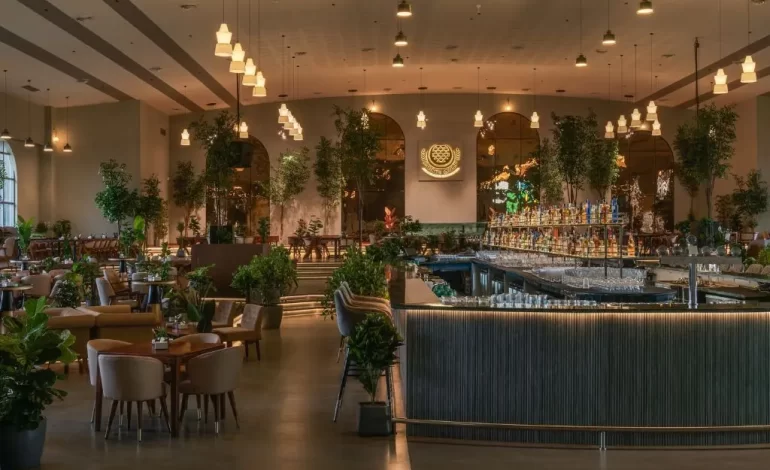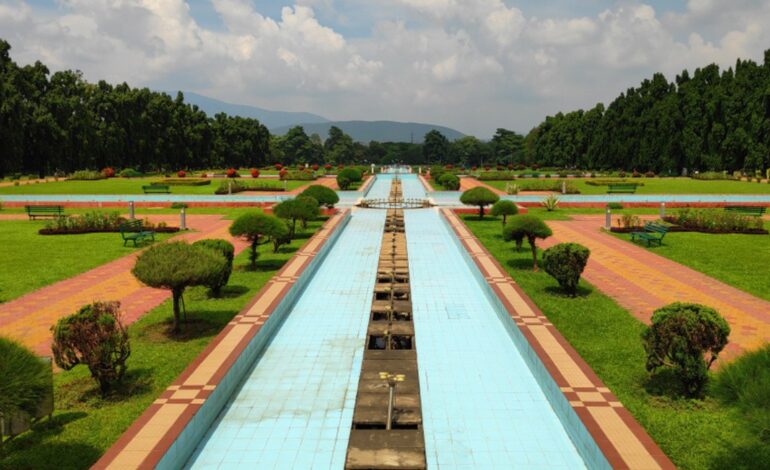
Jamshedpur, the country’s oldest developed city, combines man-made wonders like parks, lakes, and dams with natural wonders like hills and woods. Saraikela shines due to its widely known culture, especially the Chauu dance. A tour through the literary works of the late Bengali great Bibhutibhushan Bandyopadhyay can be found in Chatsila. Singhbhum combines modern technology with traditional Adivasi art, as well as the glittering steel industry with the delicate beauty of tusser silk. Don’t forget to pay your respects at the hallowed shrines of Lord Chitreshwar or Goddess Rankini, two of modern India’s most important spiritual oasis. These places encompass a fusion of spiritual holiness, innovation, and tradition. Join us to explore the cultural Heritage.
How to Reach Jamshedpur?
By Air:
Bisra Munda Airport in Ranchi, which is around 150 km from Jamshedpur city, is the closest airport. It offers flights to and from destinations like Mumbai, Delhi, and Patna. It lacks a civil airport of its own. From Ranchi, you can take a bus or cab.
By Railway:
Jamshedpur is home to Tatanagar, one of the nation’s main train stations. Jamshedpur has good rail connectivity with cities like Delhi, Chennai, Kolkata, Mumbai, Guwahati, Amritsar, Chennai, Dhanbad, and others since all significant express and postal trains regularly stop there.
By Road:
There are private and state-owned bus services that go neighboring cities. Regular Volvo buses connect Jamshedpur with Kolkata, and Ranchi, Bhubaneshwar, Patna, and Hazaribag are connected to regular buses as well.
When is Best Time to Visit ?
The best time to visit Jamshedpur would be a time when you can completely soak in the experience and not worry about such hassles. The weather is favorable along with the best of activities during this particular time in . Visit the best time where you can have a memorable experience without having to worry about small issues.
Where to stay?
With a reservation, Kalamandir CCAF can provide you with opulent tent accommodations. Situated seven kilometers from the village, the art village also features a lodge where visitors can find lodging. Additional lodging options include Guludih-Pallishri Resorts, Kousala Lodge, Hotel Oasis, Hotel Bibhuti Vihar Ghatshila (JTCD unit), and Kousala Lodge. In the future, though, the tourist village will have lodging available to greet visitors
Amadudi’s Village
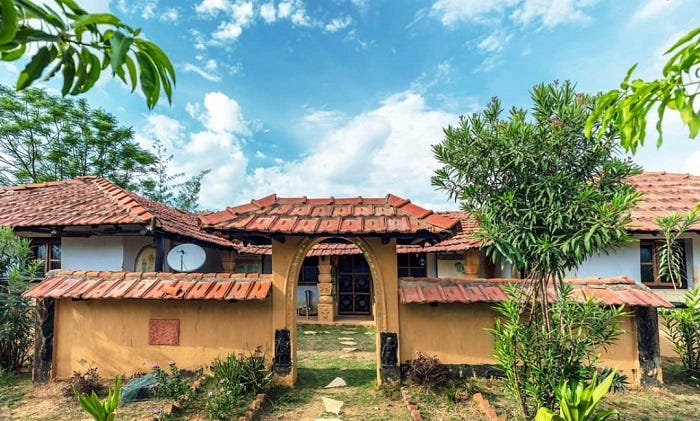
Take the not so treated path to the rural jewels of Jharkhand. The Amadubi village and discover a beautiful corner of the Indian State known for its natural and cultural wealth. Endowed with tranquil beauty of nature, rich tribal culture and splashed of earthly colors, this sustainable village has tremendous scope to spellbind tourist s from India around and the world. come, explore
This off beat locale of Jharkhand and astound yourself by its stunning beauty as Amadubi is one treasure house that we can vouch for, forever in gain in your memory.
when is the best time to visit Amadubi Village?
September to mid-March is the ideal time to visit Amadubi in order to avoid sweltering weather and intense rainfall.
How to reach?
The settlements of Amadubi are well-known, and they are connected by both highways and railways. The closest train station is located at 9 kilometers from National Highway 33 and is connected to the village’s perimeter via a metal road.
For individuals or groups travelling from the towns of Ghatshala (a popular tourist destination), Dhalbhumgarh, and Jamshedpur to the art city hamlet, there are hotels, guest houses, and local transportation available. Roads connect West Bengal, Odisha, and Bihar as well. Every 30 minutes, there are also local buses to Dhaibhumgarh.
The railways: The Dhalbhumgarh railway station is 7 km apart from the Howrah-Mumbai mainline. Ghatshaila and Chakulia are the nearest train stations for express trains. Buses and jeeps for Amadubi can be found at train terminals.
Airlines: From Kolkata, Delhi, and Mumbai, domestic flights are connected to Ranchi’s Birsa Munda Airport.
Amadubi’s Majestic Cultural Heritage
The Jharkhand government makes every effort to ensure that the monuments and artifacts found throughout the art village continue to contribute to the rich legacy of Amadubi.
Rajbari Temple: The Rajbari Temple, as its name suggests, was a portion of the palace located around one km from the Rajbari premises, which now the Dhalbhumgarh Block office in Narsingarh.
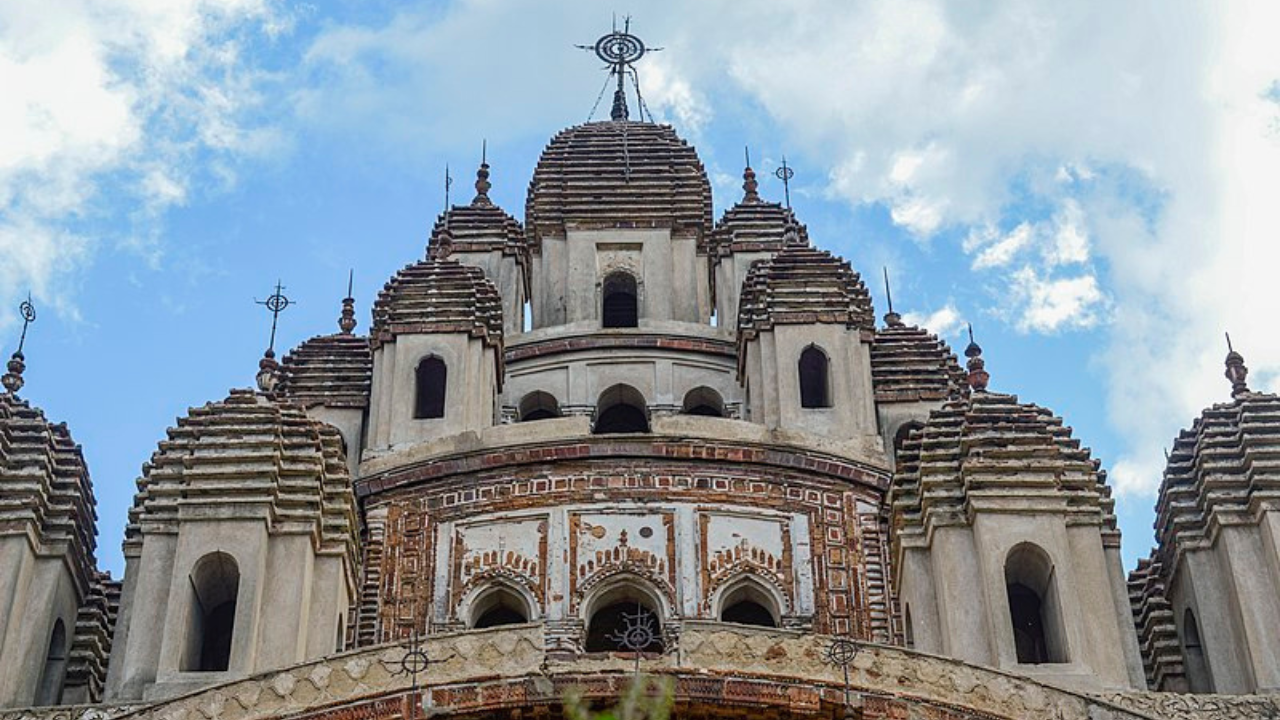
The Trivineshwar Temple is located on the same grounds as the Rajbari and has three lingas that stand in for the three main deities of the Hindu pantheon: Brahma, Vishnu, and Maheshwara.
Dasbhuj Mandir or Durga Mandir:. Dasbhuj Mandir, also known as Durga Mandir, is a temple in Rajbati that honors the ten-hand goodness, the goddess of which still exists. It is encircled by a lake and multiple other temples.
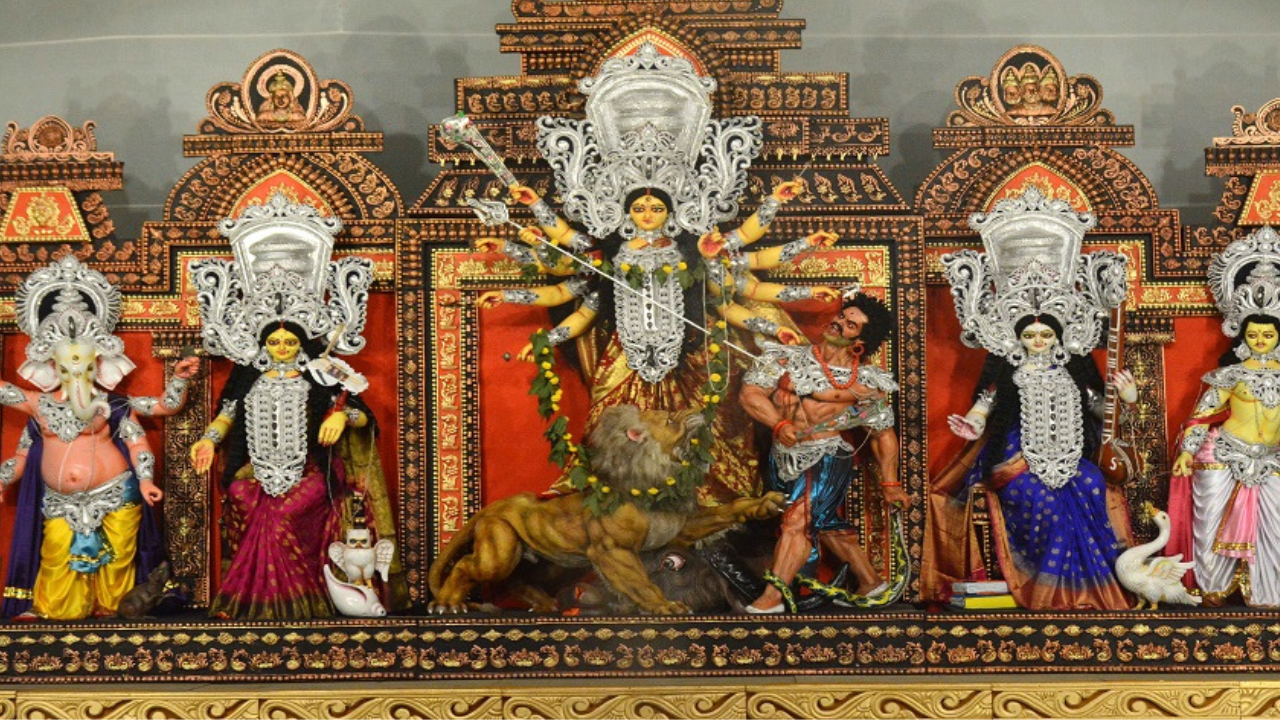
The Panch Pandavas: The Panch Pandavas: The legend-filled location lies northeast of Ghatshila town and is home to five sizable rock sculptures depicting the five powerful Pandavas brothers from the epic Mahabharata.

Ras Temple: This temple is regarded as belonging to the ancient “Dwapar” Period of Indian history and is remarkable for its unique architecture.
Kotwal Temple: Located about a kilometer from Dhalbhumgarh, the Kotwal Temple is probably dedicated to an army general.
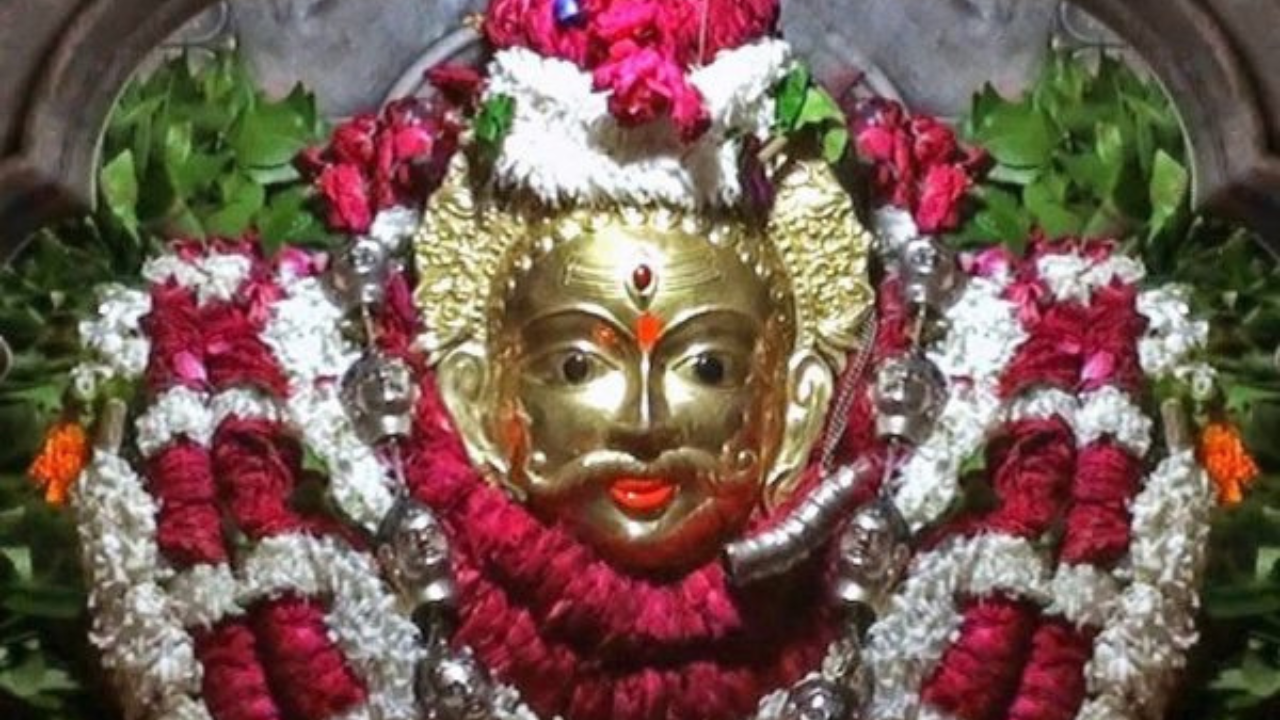
Ruam: This charming village is located 4 km from Mahulia, which was once thought to be the birthplace of the Jains or Sravakas. Researchers have also dubbed this piece of Raja Ruma’s fort.
Guhiapal: In the tenth century BC, a civilization thrived on the banks of the Subarnarekha River, as evidenced by the archeological artifacts found there. They can still locate the brick buildings, artifacts, money, etc. if you travel to the Singhbhum district’s Bahragora block.
Amadubi’s Tribal Art- The Paitakar Art
Amadubi is home for to the paitkar artist community. Also called chitrakas these skillful artists are known for painting their pieves of work on soiled, used papers and scrolls made from leaves and braks of trees. They beautify their surroundings with artistic borders and vibrant wall paintings on the streets. In these pictures, craftsmen apply vermillion and natural colors by using needles or hairs of a goat on paper and create picturesque masterpieces out of it. Tales of Garur puran (scriptures of the mythical bird god of Lord Vishnu) often form the very essence of their creative work. Since the artists of this community are nomadic, these paintings are found across the length and breadth of the undivided Singhbum district of Jharkhand.
The marketing techniques of these creators are as intriguing as their art. When they reach the hutment of the deceased or the newborn, they start recting tales and singing self–composed songs. To train and re-train the paitkar painters are provide them with new, more innovative ideas, the Art Department of Rabindranath Tagore’s “Vishwas Bharathi” Kala Bhavan and Shantiniketan have partnered together to make their art community viable. Today, more than 100 artists paint this unique art from Amadubi. come celebrate the art form of Amadubi with the chitrakars and enrich your Jharkhand experience.

Celebrations in the arty village
The district is known for its vibrant festivals, which feature tribal dances, rituals, religious celebrations, and social events, in addition to its lush green surroundings and cultural extravaganza.
Many hearts were fluttering and tapping to the staccato of the Dhol and the rhythmic beats of the mandar. The festivals observed include the Goma, the karma, the sohrai or chitraparav, and many others, which are clearly distinguishable by the various seasons of the year.
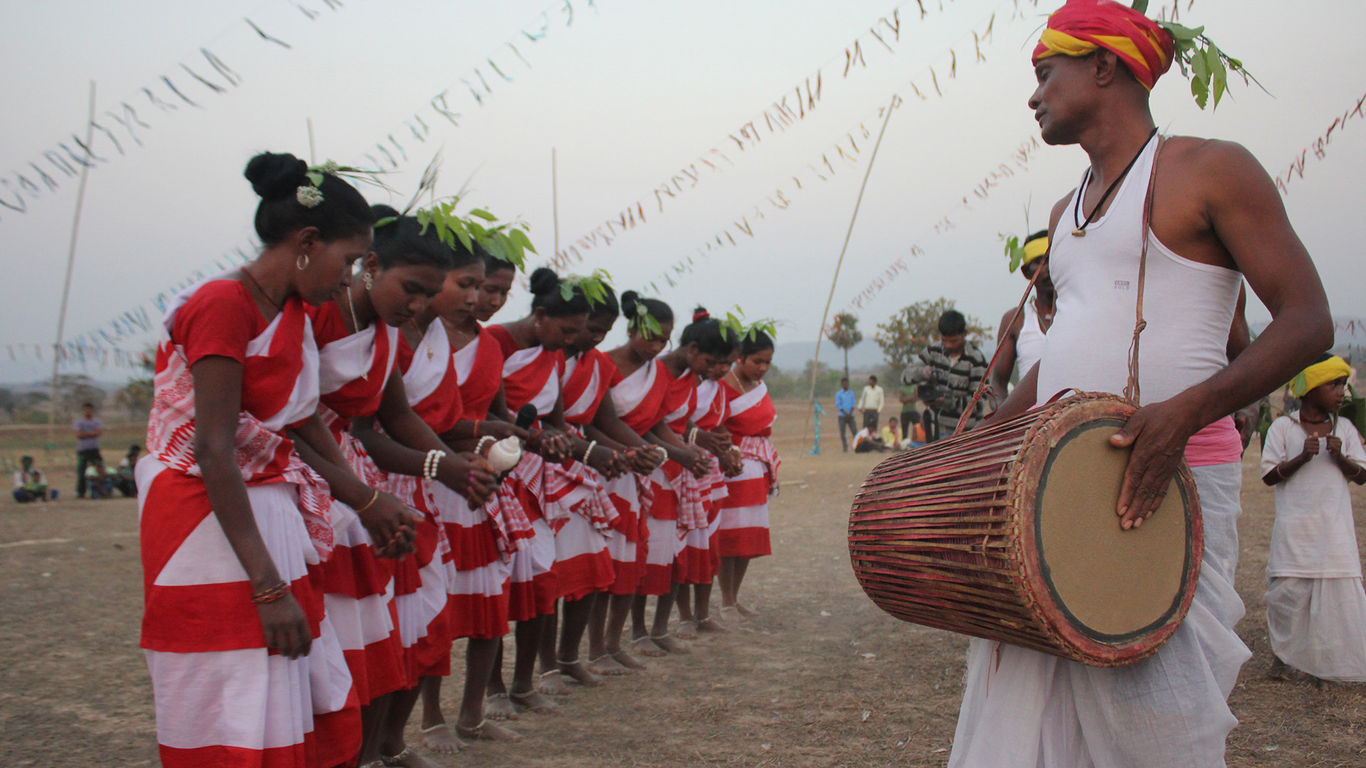
The Festival season of Amadubi
September – October: Jomnamah is celebrated during the months when the first crop is ready for harvest.
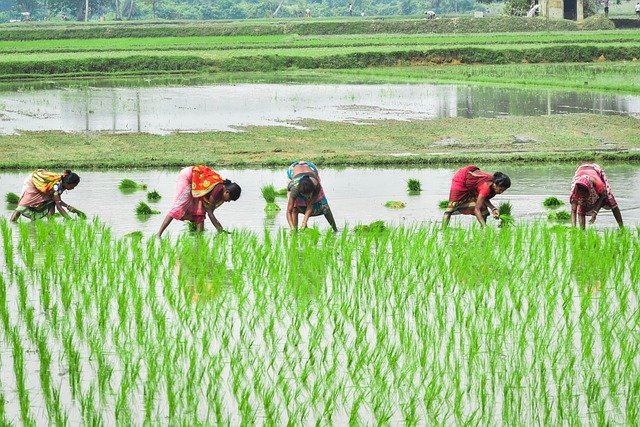
October to November: At this time Dasain is celebrated by the Santhal tribes in the company of their own musical instruments, the Bhuang and Kansar-Ghanta.It happens a few days before Durga Puja
November –December: Sohrai is celebrated during the winter months on a new moon where they worship their cattle.
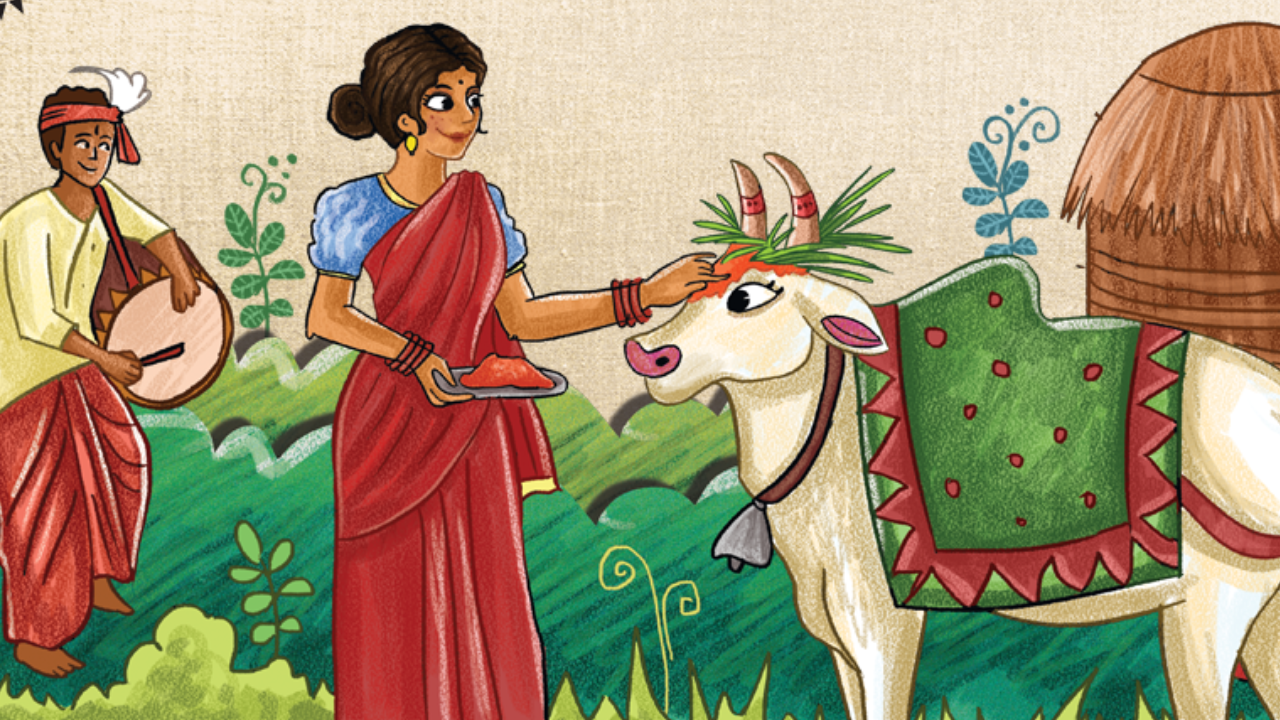
January – February: Enjoy the joyful and colourful festivals of Makara Sankranti and Tusu Parab during these months.
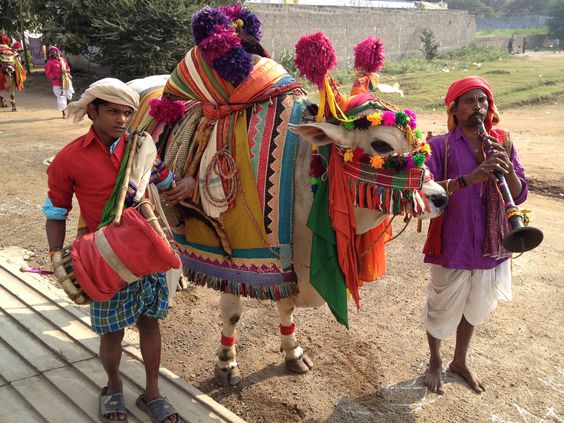
February –March: During these months, the sarhul festival is celebrated by men and women with delicate flowers of the sal tree.
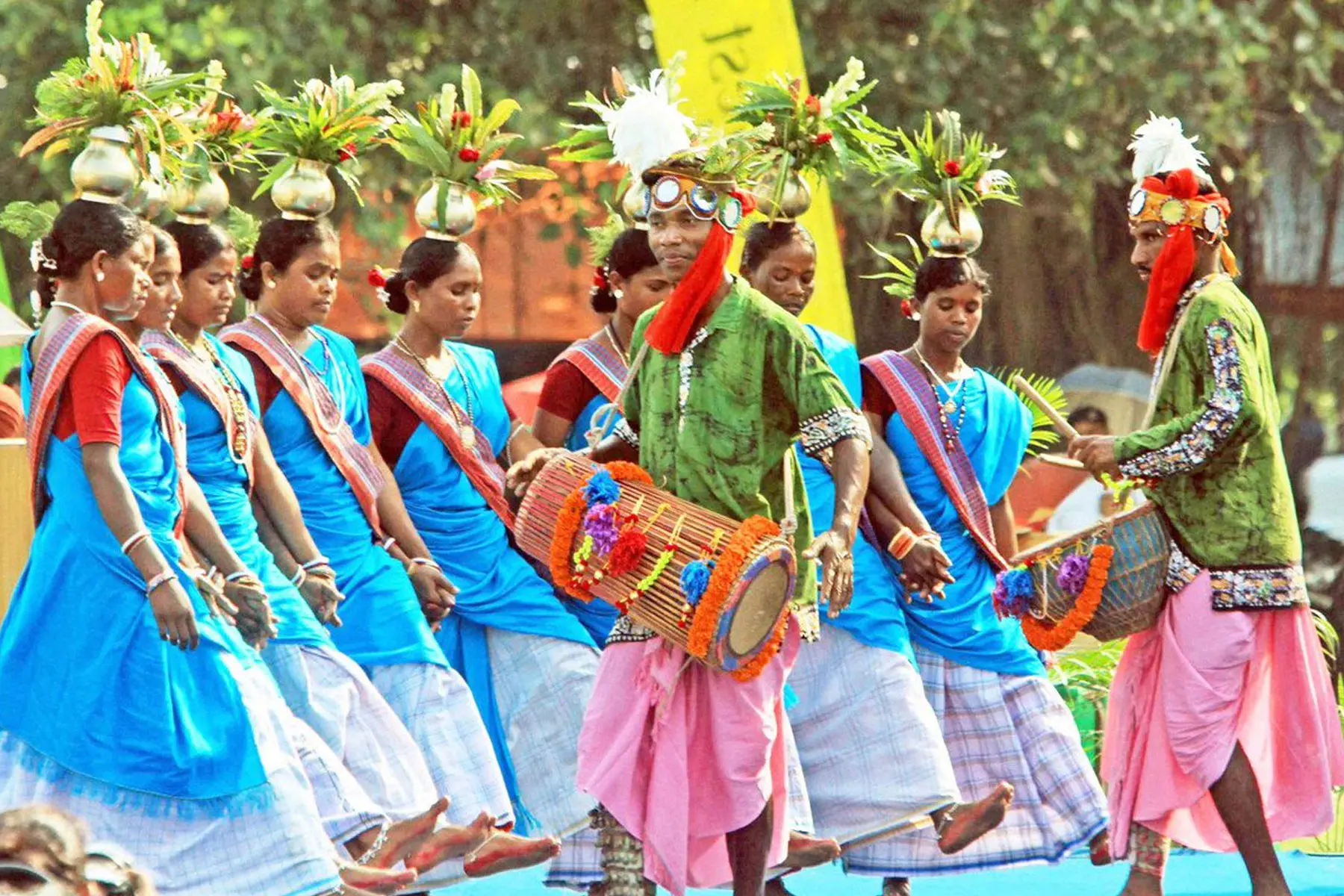
AMADUBI’S FUN ADVENTURES
Join the adventure club at the Art Village to go parasailing, river rafting, or forest trekking! Experience a live tribal performance by native dance troupes portraying the vibrant culture of Jharkhand at the Akharas, also known as the open stages. At least twenty tribal folk dancers participate in spectacular shows, which are organized by Kalamandir, an active non-governmental organization in the community. However, it is not all. Savor the traditional rice dishes, such as pitha, leto, sore, chilka, and dhuska, together with chicken cooked in sala leaf, that are the specialty of the Patkar tribe in Jharkhand. Additionally, purchase some excellent paitkar paintings from the Jharcraft Emporium, Roshpa Tower, church complex, and Harmu Bypass in Ranchi, together with bamboo, Dhokra metal, teakwood frames, and cushion coverings, to make your trip absolutely unique.
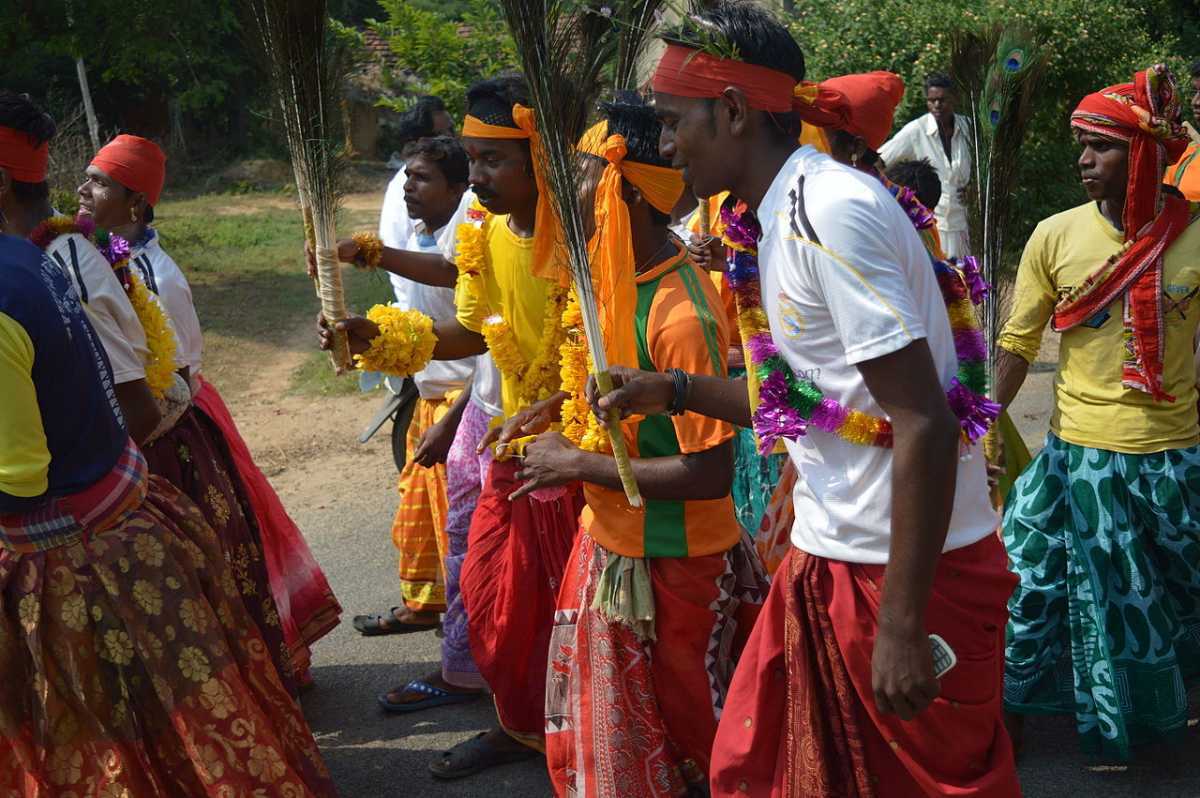
In conclusion, The artistic canvas of Jharkhand is enriched with distinct hues from Jamshedpur, Saraikela, Amadubi, and Chaibasa, which collectively represent the region’s rich cultural tapestry. The industrial might of Jamshedpur, the revered tribal culture of Saraikela and Chaibasa, the tranquil artistic community of Amadubi—all of these places perfectly capture the essence of Jharkhand’s multifaceted identity. They display the tenacity and inventiveness of their people via colorful traditional dances, elaborate handicrafts, and moving music. Collectively, they serve as evidence of how tradition and modernity can coexist peacefully, promoting a cultural rebirth that never fails to enthrall and inspire both residents and tourists.


